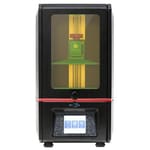It wasn’t long ago when makers on a tight budget were restricted to desktop FDM machines. Stereolithography, or SLA, is a resin-based 3D printing technology that offers unrivaled print quality when compared to FDM, but these machines were often priced in thousands and largely reserved for professionals and hardcore hobbyists.
That all changed a couple of years ago when a steady, gooey trickle of desktop-sized resin 3D printers swept the consumer market by storm. For the first time ever, frugally-minded makers could access high-quality resin 3D printing at a fraction of the cost.
Among the ever-growing presence of desktop-sized LCD 3D printers, the Anycubic Photon and Elegoo Mars have each earned immense praise for being affordable machines that are capable of producing surprisingly high-quality 3D objects. But those on the hunt for the superb LCD 3D printer at a low price may be struggling to decide between the Anycubic Photon and Elegoo Mars.
To help clear that difficult choice up for you, here’s an overview of the Anycubic Photon, the Elegoo Mars, and how the two machines match up to one another.
Anycubic Photon – Overview and Specs
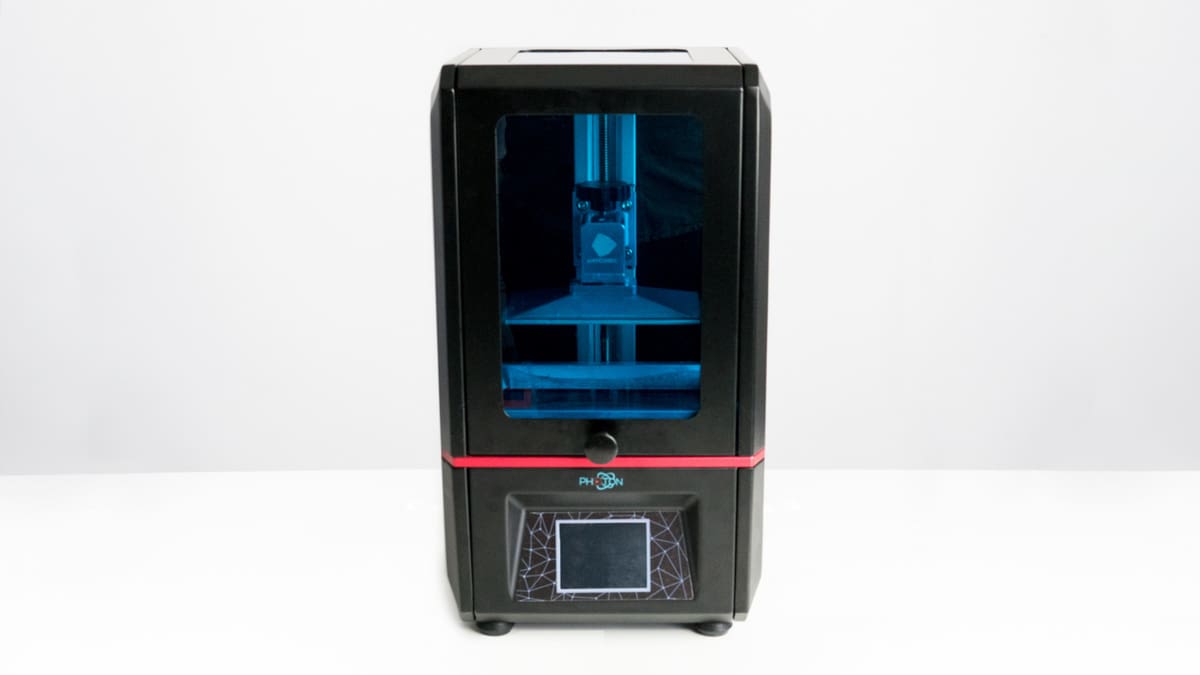
While there is now a wide array of desktop LCD 3D printers on the market, the Anycubic Photon was among the first to bring the price of resin 3D printing underneath the $500 mark. When it comes to the print quality coming from an LCD machine, the most important aspect is the screen resolution. The Anycubic Photon offers a 2K resolution, which is relatively good for the low price point.
With a rather small 115 x 65 x 155 mm build volume, users are relatively limited in what can be produced with the Anycubic Photon. What it does offer, however, is an affordable and accessible way for makers to get better acquainted with LCD technology without having to make an exorbitant investment on an SLA 3D printer.
One positive aspect of this limited size is that the Anycubic Photon is extremely compact. It has a 2.8-inch color touchscreen nestled underneath the build chamber, which is made up of a resin vat and build plate that rises after each layer is solidified. You can watch the 3D printing process (safely) through the front-facing window.
The Anycubic Photon comes pre-assembled, requiring just a few steps and taking about 20 to 30 minutes of your time. Once it’s ready to go, users can prepare 3D models using the manufacturer’s own slicing software, which makes it easy to get printing without having to input and tweak the 3D printer’s profile settings.
In our hands-on review of the Anycubic Photon, we initially encountered a few early print fails during our first few attempts, but after some tweaking with the bed leveling, eventually achieved 3D models that boasted a nearly flawless surface and high-quality details.
Technical Specifications
- Technology: LCD
- Build Volume: 115 x 65 x 155mm
- Layer Resolution: XY resolution: 47 micron/Z-layer resolution: 10+ microns
- Connectivity: USB, SD Card
- Touchscreen: 2.8-inch color touchscreen
- Input rating: 110V/220V AC
- Working Voltage: 12V DC
- Printer Dimensions: 220 x 220 x 400 mm
Elegoo Mars – Overview and Specs
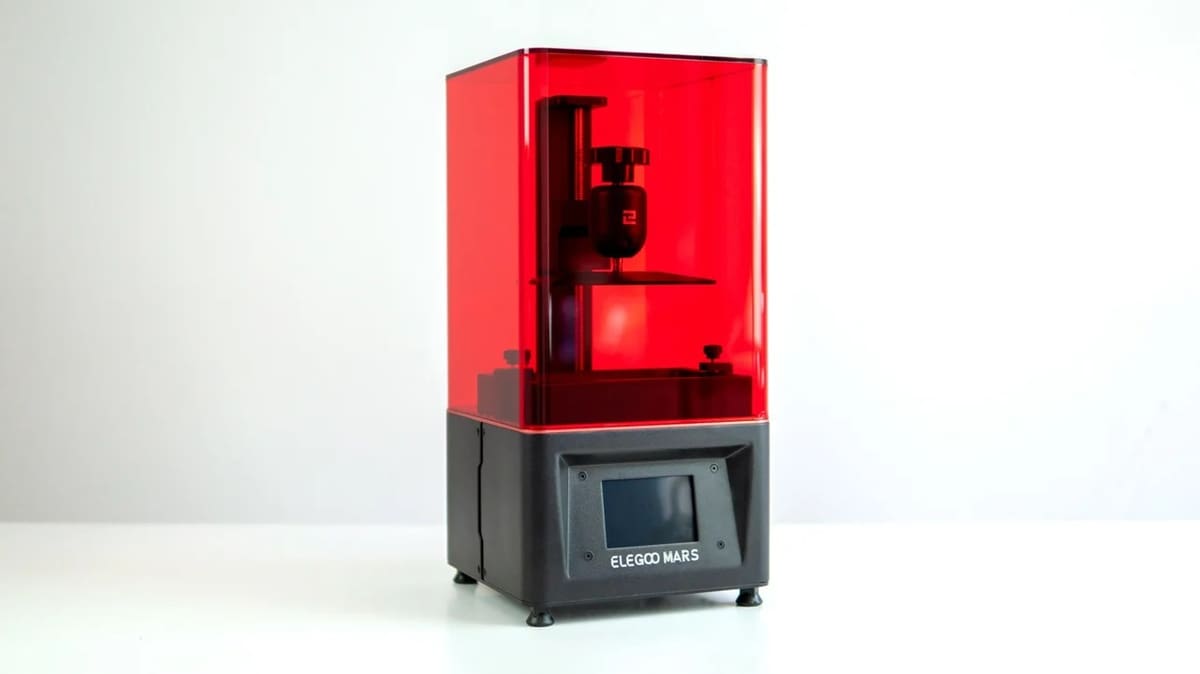
Although the Elegoo Mars was unveiled back in 2017, it took the manufacturer some time before its resin 3D printer was finally introduced onto the market. It has a compact 120 x 68 x 155mm build volume but makes up for this shortcoming by consistently churning out prints with impeccable quality.
This LCD 3D printer features a 2560×1440 2K HD masking LCD, providing highly accurate printing with an impressive XY axis resolution of 0.047mm (0.00185 in). In our review of the Elegoo Mars, we found that using the Elegoo Mars was as effortless as a budget-priced resin 3D printer could be.
Similar to the Anycubic Photon, the Elegoo Mars build plate leveling utilizes a ball-jointed mechanism that can be loosened with two screws. The Elegoo Mars is equipped with a 3.5-inch color touchscreen, while a red UV-blocking lid covers the entire build chamber, allowing the printing process to be observed from any angle.
Although the Elegoo Mars doesn’t employ a proprietary slicing software, it’s accompanied by ChiTu firmware and ChiTu Box print preparation software that has all of the printer’s settings inputted. This slicer offers some intriguing features, such as model hollowing, which can help save resin during the photocuring process.
Technical Specifications
- Technology: LCD
- Build Volume: 120 x 68 x 155mm
- Layer Resolution: XY resolution: 47 micron/Z-layer resolution: 10+ microns
- Connectivity: USB, SD Card
- Touchscreen: 3.5-inch color touchscreen
- Input rating: 110V/220V AC
- Working Voltage: 12V DC
- Printer Dimensions: 401 x 419 x 200 mm
Head to Head
While the Elegoo Mars and Anycubic Photon share several similarities, there are distinguishing features that set the two LCD 3D printers apart. Here’s a breakdown of some important features to help you determine which might be the best option for all your resiny aspirations.
Build Volume
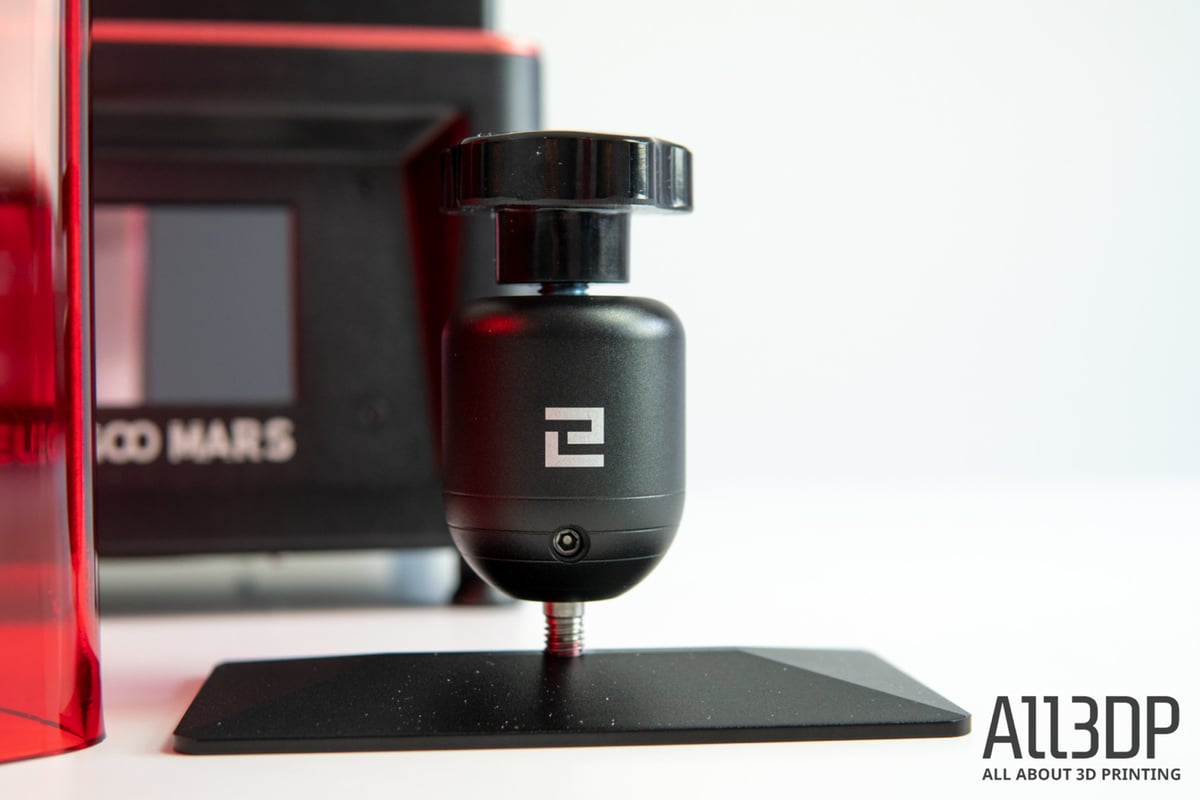
The build volume differences between these two LCD 3D printers are nearly indiscernible at a glance, but the Elegoo Mars ever-so-slightly beats out the Anycubic Photon with a 120 x 68 x 155mm build volume. The Z-axis measurements for these two contenders are the same, but Mars offers an additional 5mm on the X-axis and 3mm on the Y-axis.
Print Quality
For the most part, the print quality that resin 3D printing technology provides is indistinguishable to the naked eye. This especially rings true when comparing the Anycubic Photon and Elegoo Mars, as both 3D printers are said to offer an XY resolution of 47 microns and a Z-layer resolution as low as 10 microns. In other words, when it comes to print quality, both of these machines deliver satisfying results, especially considering the low price point.
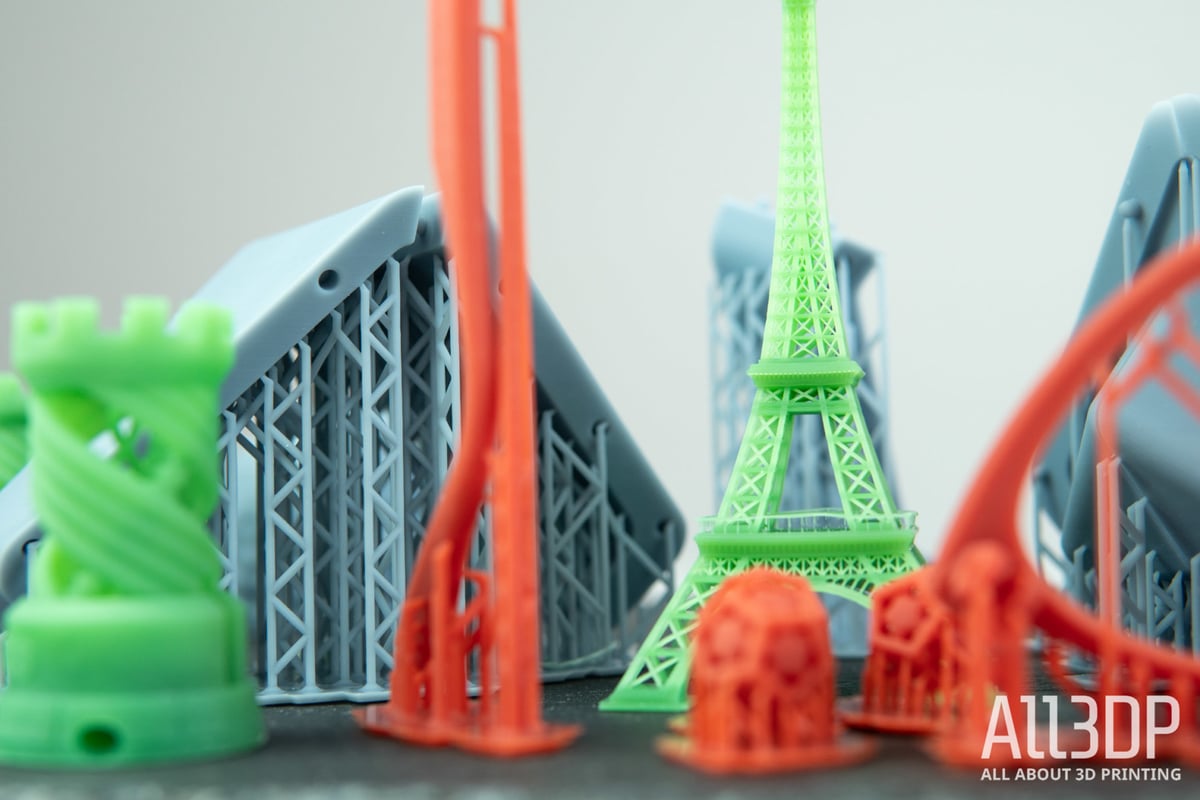
Price
Like most budget-priced 3D printers on the market, the price of the Anycubic Photon and Elegoo Mars is largely contingent on the retailer you purchase it from. For instance, as of Fall 2019, the Elegoo Mars is listed at $369 on the manufacturer’s website but is nearly $100 cheaper at Amazon. On the other hand, Anycubic has priced its LCD printer at just $249 (without resin) or $289 (with resin).
While the price difference between the Elegoo Mars and Anycubic Photon will likely remain in flux depending on where and when it’s purchased, there is an important distinction that gives the Photon the edge here. While the Elegoo Mars usually comes without any starting resin, the Anycubic Photon is, in most cases, accompanied by 250ml of starting resin.
Assembly
Another similarity between the two machines is that they’re essentially plug-and-play 3D printers. Both come largely pre-assembled and require just a bit of light manual labor before users can get their toes sticky in resin. The main step for both machines is inserting the resin vat and attaching the print plate. Admittedly, the Anycubic Photon requires a few extra steps, making it slightly more time-consuming.
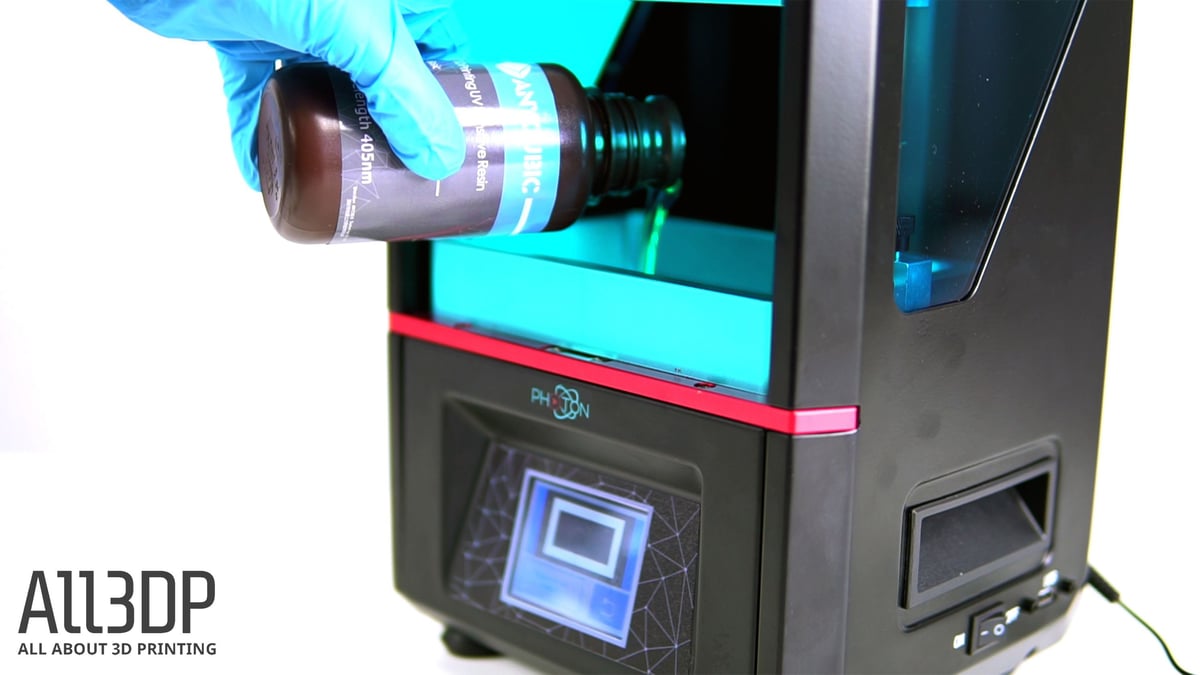
Once assembled, the bed leveling process also remains largely the same. Both the Anycubic Photon and Elegoo Mars can be considered as plug-and-play 3D printers. However, we did achieve quicker success with the Elegoo Mars, taking just two minutes for us to prepare and start printing.
Under the Hood
The technology the drives both the Anycubic Photon and Elegoo Mars are extremely similar. For instance, these two LCD printers employ a 2560×1440 2K HD masking LCD, which is what’s used to project light into the resin vat. The Elegoo Mars has a slightly larger touch screen and build volume, but otherwise the mechanics aren’t too different. On the other hand, the exteriors of these two machines are more distinct, especially when comparing the red UV-blocking lid on the Elegoo Mars and the more limited front-facing window of the Anycubic Photon.
Verdict
So, considering the similarities and differences between the Elegoo Mars and Anycubic Photon, you may be wondering which of these resin 3D printers is the right choice for you. To be frank, both machines offer an incredible bargain for this type of technology, as each can usually be sourced for under $300. It ultimately depends on what your preferences are.
If you want an LCD 3D printer that is easier to set up, has a slightly larger build volume, and (from our experience, at least) has a better success rate while printing, perhaps the Elegoo Mars is your crown jewel. On the other hand, if you want a machine that comes pre-packaged with resin and has a larger community behind it, the Anycubic Photon may be the more appealing option.
After encountering largely positive experiences with both of these printers in the All3DP office, we’d wager that you would not be disappointed with either the Elegoo Mars or Anycubic Photon. To help ease this decision, we recommend diving deeper into our full reviews of the Anycubic Photon and Elegoo Mars, while also checking the current prices from different retailers to find out which printer is the more cost-effective option.
License: The text of "Elegoo Mars vs Anycubic Photon: The Differences" by All3DP is licensed under a Creative Commons Attribution 4.0 International License.
CERTAIN CONTENT THAT APPEARS ON THIS SITE COMES FROM AMAZON. THIS CONTENT IS PROVIDED ‘AS IS’ AND IS SUBJECT TO CHANGE OR REMOVAL AT ANY TIME.
